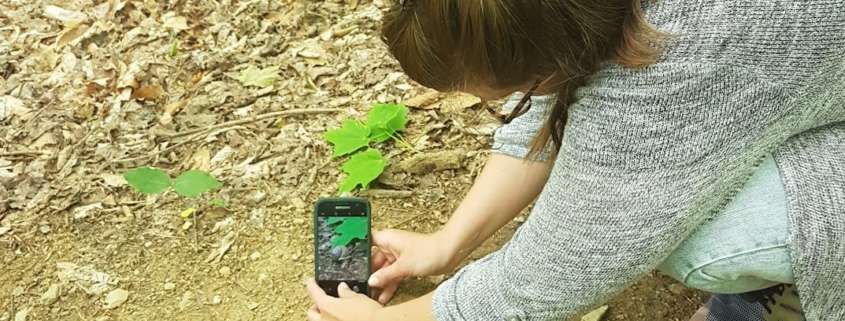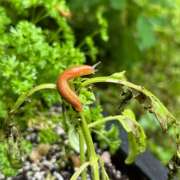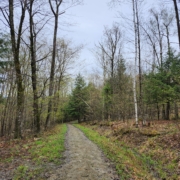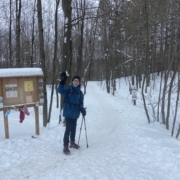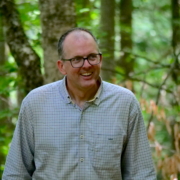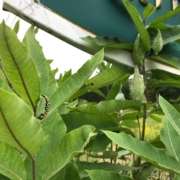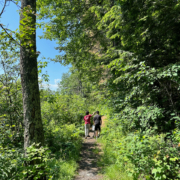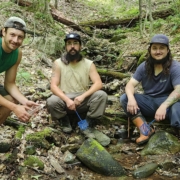Biodiversity, Jenga and the 2023 Monarch Butterfly Project
Written by Jessica Adams (Nature Nerding)
Reading time: 5-6 minutes
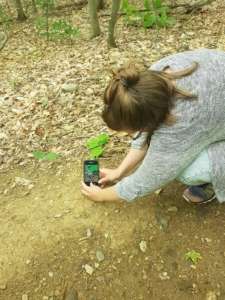
With the passing of “No Mow May”, many might find themselves curious about the overall importance and impact of seemingly simple gestures such as letting a lawn grow out for one extra month each year. The short answer: when it comes to conservation, it can be easier to appreciate the interconnectedness and the impact of each moving part when we zoom out. A lawn is not just a span of grass that needs tending for aesthetic purposes, it is a habitat. Not only is it part of a wider network of similar habitats (i.e. other people’s lawns, fields and the like), but it is one that, if left to its own devices, grows a much wider variety of plant species that eventually flower making it much more valuable to wildlife, pollinators in particular.
This article is not about “No Mow May”, however, but rather the overarching concepts of biodiversity, conservation and how they pertain to the plight of pollinators. As summer approaches and we begin to move forward with the Massawippi Foundation Monarch Butterfly Project, we are sharing more about the concepts underlying efforts of this type to protect the Monarch population.
Understanding Biodiversity
You have likely heard the term before, but what does biodiversity mean to you? It may conjure images of a thriving ecosystem with a variety of species living alongside one another. Without a doubt, we can appreciate variety, the beauty of it, and the notion of “richness”, but what exactly is biodiversity and why is it important?
Biodiversity is all the different kinds of life you’ll find in one area—the variety of animals, plants, fungi, and even microorganisms like bacteria that make up our natural world. Each of these species and organisms work together in ecosystems, like an intricate web, to maintain balance and support life. (Worldwildlife.org)
The above definition highlights that biodiversity includes not just the elements we can see, nor the ones we deem “beautiful”, but all of the living parts, right down to the microscopic players. It also weaves in the notion of working together. Each species in a biodiverse ecosystem has specific roles to play that will impact the survival of other species in the ecosystem to varying degrees.
This does not mean each species has a role all its own without any overlap. In fact, redundancy is one of the key ways in which biodiversity sustains healthy, resilient ecosystems. There are various ways of envisioning how this operates. Think of biodiversity as Nature’s built-in contingency plan. Ehrlich and Ehrlich (1981) compared each species in an ecosystem to the rivets on a plane – if one is removed, the impact is minimal, but the more rivets removed, the greater the risk of catastrophe.
Another way of looking at it is likening an ecosystem to a tower of Jenga blocks. Each block represents a species (and the roles it plays) within that ecosystem. The more blocks (species) removed, the less stable the tower (ecosystem) becomes. As blocks are slowly removed, the tower may stay upright, but is much more vulnerable to disruption – a breeze, the floor shaking… This is not unlike how an ecosystem becomes more vulnerable to disasters such as storms, droughts or invasive species. The more diverse the system, the sturdier the tower and the more resilient it is to adversity.
The Importance of Encouraging Biodiversity
Biodiversity supports everything in nature that we need to survive: food, clean water, medicine, and shelter. (Worldwildlife.org)
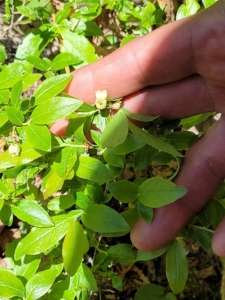
From a purely anthropocentric standpoint, biodiversity serves us and we therefore have a vested interest in maintaining it. That being said, we often have a tendency to focus on the grander species or charismatic megafauna. The thing is, the bigger the animal does not necessarily mean the greater the importance.
Insects comprise two-thirds of life on Earth and each year they are responsible for providing ecological services valued at $57 billion. Perhaps one of the most valuable services is that of pollination. According to Pollinator Partnership, we can thank pollinators for two out of every three bites of food we eat and they sustain overall ecosystem function by helping plants reproduce.
Zooming Back In: The Massawippi Foundation Monarch Project

As you might imagine, there is a lot more to the big-picture conversation on biodiversity, conservation and pollinators. When it comes to passing from learning to action, however, zooming back in is essential if we want to avoid overwhelm and downright discouragement. So how, where and when can we start?
Put simply: Start small, focus close to home and start as soon as you can.
In March, we shared an article on the Monarch Butterfly, introducing an exciting new project spearheaded by the Foundation in collaboration with Nature Nerding. This project is the Foundation’s way of taking action by zooming in on how it can have a concrete impact on the pollinator population in its own backyard.
Starting small and close to home: Milkweed and Monarch conservation at Scowen Park
As soon as we can: Launching this summer!
This project also encompasses the four tenets of conservation which are fundamental to the Foundation’s conservation mission:
- Preservation – The natural milkweed and monarch habitat in the fields at Scowen Park will be protected and we hope to eventually lead initiatives that protect the milkweed populations throughout neighboring communities.
- Research – The project will include a citizen science component like several existing Monarch Butterfly projects (see list below).
- Recreation – Project elements will be available for all visitors to view, admire and enjoy when they come for a walk at Scowen.
- Education – The project will involve the installation of information panels as well as educational activities and visits open to the public (more details coming soon).
The hope is to make use of resources and partake in programs that already exist (adapting them where necessary) while also developing a conservation and education model unique to Scowen Park and the Massawippi Foundation.
For this to be a success, we are counting on the participation from our beloved community!
How to Get Involved

Are you interested in learning more about the Massawippi Foundation Monarch Butterfly Project? Do you have ideas you would like to share? Perhaps you would like to watch over metamorphosing Monarchs when the time comes?
No matter your level of interest, we would love to hear from you. We plan to assemble our first ever “Butterfly Brigade” for the summer of 2023 with a first meeting in late June.
To put your name on our list of potential Brigade members, please complete the short form here: 2023 Butterfly Brigade Registration Form
You may also write to the following email with any questions you’d like to ask or thoughts you’d like to share: [email protected]
Build Your Nature Vocabulary
Use the text and search the web to build your nature vocabulary and try using it the next time you’re out and about in nature, either making observations by yourself or with friends!
- Habitat
- Biodiversity
- Charismatic megafauna
- Ecological services
References
– What is biodiversity? Why it’s under threat and why it matters (World Wildlife Fund)
– Pollinators need you. You need pollinators. (Pollinator Partnership)
– Pollinisateurs (Fondation David Suzuki)

